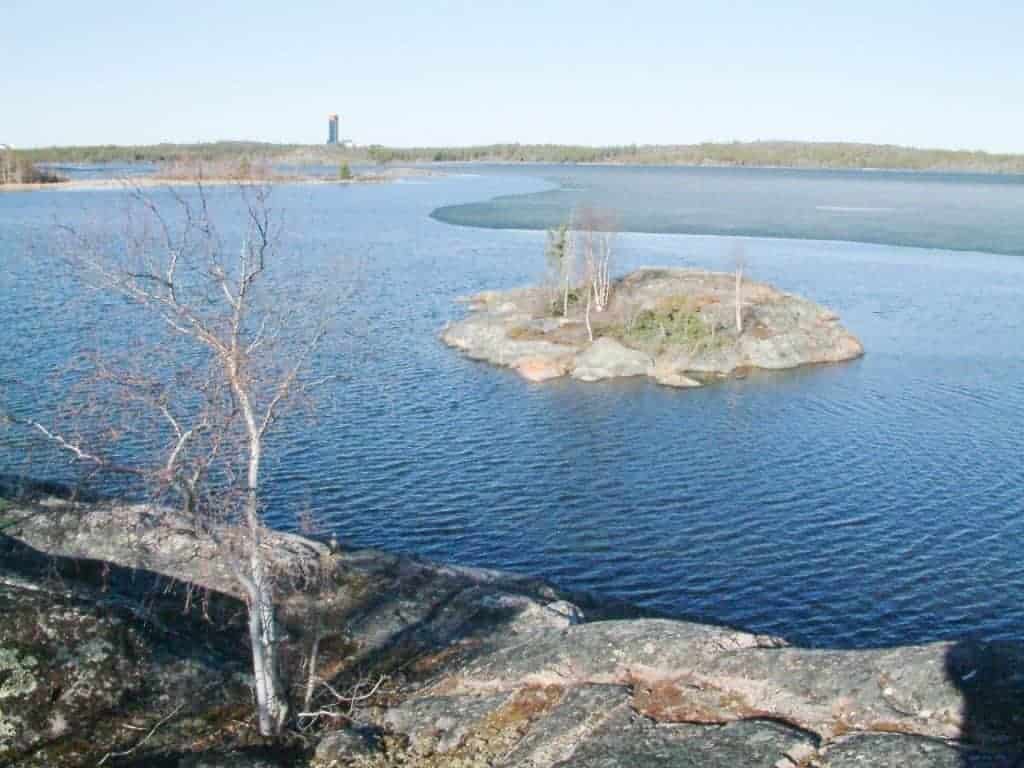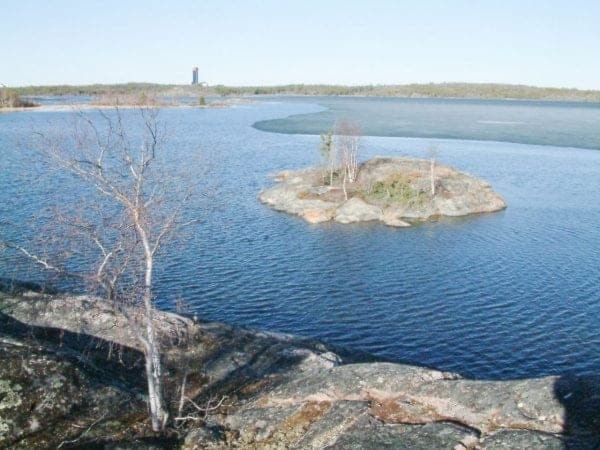
New arsenic testing results are in for Kam Lake, but the territory’s chief public health officer says not much will change in terms of his health advice to residents.
“It’s a big improvement from 10 years ago but … it’s still more than 20 times the drinking water guidelines,” said Andre Corriveau of the water’s high arsenic concentration.
Under-ice data collected by the Department of Environment and Natural Resources this April showed the average level of arsenic in Kam Lake was about 240 parts per billion. That’s 24 times higher than Health Canada’s guidelines for safe drinking water, which say it should contain less than 10 parts per billion of dissolved arsenic.
“You can catch and release, but you shouldn’t be using the fish from that lake as a source of food,” said Corriveau of Kam Lake. “The other issue for me in terms of the advice we provide let’s say for fish, is that if it’s contaminated with arsenic, it might have other contaminants like mercury or things that mines produce.”
Robert Jenkins, director of water resources at the Department of Environment and Natural Resources, said arsenic levels were about twice as high in Kam Lake during the late 1980s, but have since decreased.
“Right now … we’re just trying to understand the conditions in the lake,” he said. “If we’re seeing elevated results, we need to look at what are the causes, what are the sources of that, and how will things potentially change through time.”
Seven locations at Kam Lake and three at Grace Lake were tested this April, according to Jenkins.
The results showed arsenic levels at Grace Lake were 15 parts per billion, just over Health Canada’s safe drinking water guidelines.
A public advisory released by the Department of Health and Social Services this April shows swimming and catch-and-release fishing is OK in lakes with arsenic levels such as those found in Grace Lake.
The department is also cross-referencing its findings with those of Miramar Northern Mining Ltd., which is required under a water licence to test arsenic levels in Kam Lake during open-water season.
The company is in charge of remediating Con Mine.
Miramar’s October 2016 testing results showed arsenic levels were similar to the department’s recent findings.
Jenkins said the department is planning do more testing this fall.
“We just want to see is the water chemistry and quality changing throughout the season and what a difference might be between under ice samples and open water samples,” he said.
Kam Lake MLA Kieron Testart, who raised concerns about water quality in Kam Lake earlier this year in the legislative assembly, said he is pleased to see work continuing on the issue.
“The results aren’t telling us anything that we didn’t already know, which is that we have a lot of work left to do,” Testart said. “The important thing is we do these studies now and we do them on regular intervals so we can communicate that information to the public.”
He added it needs to be made clear for residents which lakes are safe and which are not.
Testart is hosting a town hall next Friday evening at the Multiplex so residents can pose questions about arsenic.
The health minister and staff from the Department of Environment and Natural Resources and the Giant Mine Remediation Project will also be in attendance, he said.
